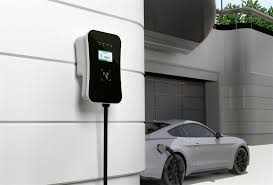Why CCS Charging Stations Are Leading the EV Revolution
As the global shift toward sustainable transportation accelerates, the electric vehicle (EV) industry is undergoing rapid evolution. Central to this transformation is the charging infrastructure that powers these vehicles. Among the various charging technologies available, Combined Charging System (CCS) stations have emerged as a clear frontrunner. But what makes CCS the leader in this electric revolution? Let’s explore the key reasons behind its growing dominance.
What Is CCS?
The Combined Charging System (CCS) is a standardized charging protocol that supports both AC (alternating current) and DC (direct current) charging. It was developed to offer a universal solution that could cater to a wide range of EVs across different manufacturers and regions.
CCS comes in two main variants:
CCS Type 1: Common in North America
CCS Type 2: Widely used in Europe and other parts of the world
What sets CCS apart is its ability to support high-speed DC charging, enabling EVs to charge significantly faster than with traditional AC chargers.

1. Universal Compatibility Across Manufacturers
One of the strongest arguments in favor of CCS is its wide industry support. Major automakers such as BMW, Volkswagen, Ford, Hyundai, Kia, and General Motors have adopted CCS as the standard for their EVs. This level of manufacturer buy-in is crucial for standardization, which ultimately makes the charging experience more seamless for consumers.
Unlike proprietary charging networks (like Tesla’s Supercharger, which until recently only supported Tesla vehicles), CCS chargers are designed to be open and accessible, providing greater flexibility and convenience for EV owners.
2. Faster Charging Speeds
Time is of the essence, especially for drivers transitioning from gasoline vehicles. CCS supports ultra-fast charging rates—typically ranging from 50 kW to 350 kW, depending on the charger and vehicle capabilities. At the upper end, a CCS station can add hundreds of kilometers of range in under 30 minutes.
This makes CCS an ideal choice for long-distance travel, where reducing charging downtime is crucial. As battery technology improves, even higher charging speeds may become feasible through CCS without changing the connector design.
3. Scalability and Future-Readiness
CCS was built with the future in mind. Its design allows for scalability in power delivery, making it suitable for everything from compact urban EVs to heavy-duty trucks and commercial vehicles. As energy demands increase, the CCS architecture is well-equipped to evolve alongside EV technologies without needing to reinvent the system.
Moreover, CCS supports features like Plug & Charge, enabling automated billing and authentication without the need for apps or RFID cards—making the user experience smoother and more intuitive.
4. Growing Global Infrastructure
Thanks to strong backing from industry and governments alike, CCS infrastructure is expanding rapidly. Charging networks such as Electrify America, Ionity, and EVgo have heavily invested in CCS-compatible stations, especially along major highways and urban centers.
This broad deployment ensures that EV drivers are less likely to encounter range anxiety, which has long been a concern for potential adopters. The more widespread CCS stations become, the more confident drivers feel in making the switch to electric.
5. Support from Policy and Regulation
Governmental support plays a critical role in shaping EV infrastructure. In Europe, CCS Type 2 has been mandated by the EU as the standard for all new public charging stations. This regulatory push helps unify the market, reduce confusion for consumers, and accelerate the adoption of EVs by ensuring consistent and reliable charging options.
In North America and other regions, CCS is often favored in public funding programs and infrastructure grants, further solidifying its place at the forefront of EV charging.
Conclusion: CCS Is Paving the Way for the EV Future
The transition to electric mobility is no longer a question of if, but when. In this pivotal moment, having a robust, scalable, and widely supported charging standard is essential. The Combined Charging System (CCS) checks all the boxes—interoperability, speed, scalability, and global acceptance.
As automakers align and infrastructure grows, CCS stands tall as the backbone of the EV revolution—ensuring that drivers not only make the leap to electric but do so with confidence and convenience.
Comments
Post a Comment